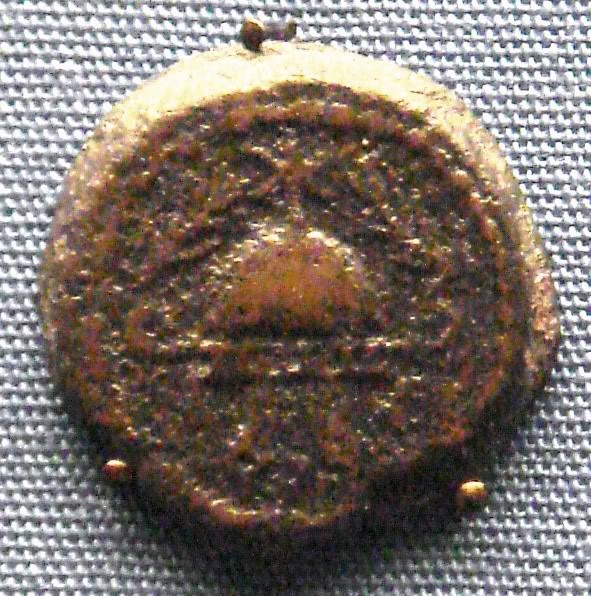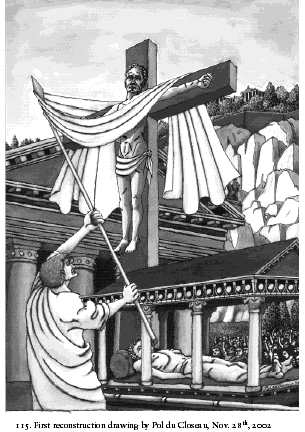
 |
Freethought & Rationalism ArchiveThe archives are read only. |
|
|
#91 |
|
Veteran Member
Join Date: Jun 2010
Location: seattle, wa
Posts: 9,337
|
Let me make clear, I am not ARGUING that Marqe is in fact Philo. I am only saying that it might be possible:
What? You have never read even a portion of Embassy to Gaius? You have never read In Flaccum? isn't he defending his own people in these works? What does In Flaccum have to do with anything? What if Jews and Samaritans venerated God in the same temple in Alexandria? There's just too much we don't know about the religious life of these people. Let's start with the facts. Jews and Samaritans left Palestine with Ptolemy to settle in Alexandria. They settled in the same part of Alexandria (= the cow pasture). There might even have been a temple of some sort constructed in the area. The Jewish and Samaritan traditions get closer to one another the further back you go (= because the Sadducees were common to both and Gerizim was the original place of worship for both?) Sorry the neighbor's cat is outside. Big event in the house especially for my dog |
|
|
|
|
#92 |
|
Veteran Member
Join Date: Jun 2010
Location: seattle, wa
Posts: 9,337
|
So if we are talking about 'Samaritans' in Alexandria we are talking about the Dositheans (who were still a force in the city down to at least the sixth century). There are indications that the Dositheans had some features shared in common with the Jews (the year beginning in the seventh month etc). The Dositheans are also said to have been an early (and even 'the earliest') Christian sect or proto-Christian sect. Is there some overlap here? There is a culture (or perhaps many cultures, a typology) we have lost touch with in Alexandria. Are 'Jews' in Alexandria really 'Jewish'? No Hanukkah for instance until very late. Different Pentateuch. Different temple? Different traditions?
It is a big 'who knows' throughout. We know almost nothing even about who Philo is. |
|
|
|
|
#93 |
|
Veteran Member
Join Date: Jun 2010
Location: seattle, wa
Posts: 9,337
|
"The allegorical method, in the hands of Philo and Marqah, involves treating philosophy as if it were present in the Pentateuch as the hidden meaning of verses, and revealing the hidden meaning. It is evident from this that, considered from the purely methodological point of view, there are wide-ranging similarities between Philo and Marqah. But, as I hope to show, the similarities are more wide-ranging still. For on numerous philosophical matters the ideas of the two thinkers coincide, and even their modes of expression often bear, despite language differences, an undeniable similarity. It is no part of my aim here to argue that Marqah had read Philo, though the proposition that he had done would not, in view of the similarities, be bizarre — particularly in view of the presence in Alexandria of a large Samaritan community in Alexandria who no doubt maintained close links with Shechem. It is enough for my purposes if I give grounds for believing that the cultural ethos of the Hellenistic Jews of Alexandria coincides at certain crucial points with the cultural ethos of the Samaritans of Shechem." [Alexander Broadie, A Samaritan Philosophy p. 6]
|
|
|
|
|
#94 | ||||
|
Regular Member
Join Date: Dec 2011
Location: The only Carribean port not in the Tropics.
Posts: 359
|
Quote:
A bronze coin minted during the reign of Herod the great clearly shows a chresimon or star on top of a helmet. (At the link in the quote below, this star is in the form of a Latin Cross, or tropaeum.)  Quote:
Quote:
|
||||
|
|
|
|
#95 |
|
Veteran Member
Join Date: Jun 2010
Location: seattle, wa
Posts: 9,337
|
This is very important, la. I think we've found another piece to the puzzle. If the chresimon = star than the reality of crucifixion by chresimon is the fulfillment of God's promise to the Israelites to be translated into stars (Genesis 15 etc). The idea of being transformed into stars is very important to Philo no less than Paul (1 Cor 15). I even think a similar passage is preserved in Slavonic Josephus
|
|
|
|
|
#96 |
|
Veteran Member
Join Date: Jun 2010
Location: seattle, wa
Posts: 9,337
|
Of course we still have to come to terms with the ultimate question - HTF did a cult of crucifixion infect the exegesis of the Pentateuch? It's one thing to allow for the idea that one mentally ill person thought that being impaled on a star was a great idea. But how did this “catch on”?
|
|
|
|
|
#97 | ||||
|
Regular Member
Join Date: Dec 2011
Location: The only Carribean port not in the Tropics.
Posts: 359
|
Speaking of facts...
Quote:
Quote:
Quote:
Quote:
|
||||
|
|
|
|
#98 | ||
|
Regular Member
Join Date: Dec 2011
Location: The only Carribean port not in the Tropics.
Posts: 359
|
Quote:
Quote:
Francesco Carotta - Jesus Was Caesar - Crux Youtube: Calpurnpiso - Caesar Christ Wax Imago was ROOT of Jesus Myth Crucifixion... Of course, the Latin Cross Crucifixion was not depicted until after 325 CE. |
||
|
|
|
|
#99 |
|
Regular Member
Join Date: Dec 2011
Location: The only Carribean port not in the Tropics.
Posts: 359
|
Francesco Carotta's reconstruction of the crucifixion of Julius Caesar in imago:
 I need to do some errands now... |
|
|
|
|
#100 |
|
Veteran Member
Join Date: Jun 2010
Location: seattle, wa
Posts: 9,337
|
I have my reservations about the historical reliability of antiquities. The text was developed in obvious imitation of Dionysius's Roman Antiquities. By whom? An Aramaic speaking Pharisaic who admits to having difficulties with Greek language and culture? The text was developed by someone in Josephus's name (one or many synergoi). The historical Josephus likely only wrote the hypomnema behind Jewish War as Cohen and others have already demonstrated
|
|
|
| Thread Tools | Search this Thread |
|